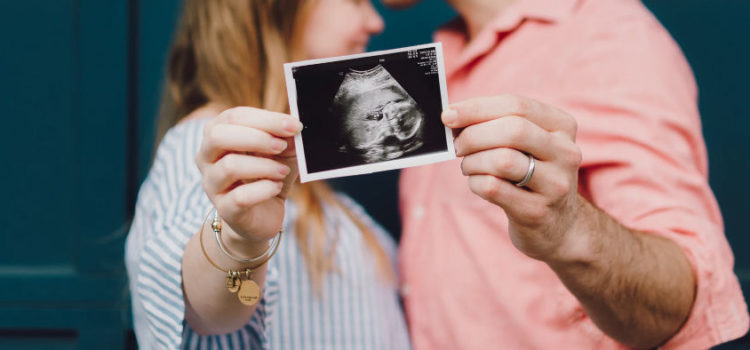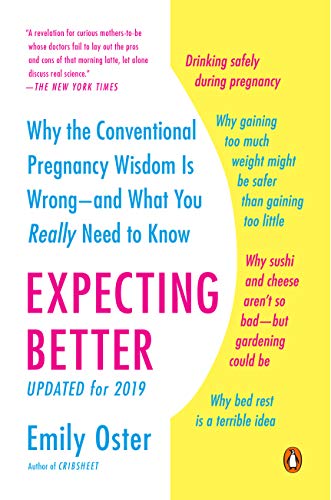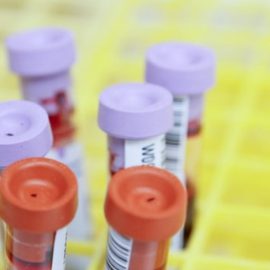

This article is an excerpt from the Shortform summary of "Expecting Better" by Emily Oster. Shortform has the world's best summaries of books you should be reading.
Like this article? Sign up for a free trial here .
What is the cell-free fetal DNA test? How can it help you detect Down Syndrome and other disorders, at minimal risk to the baby?
Learn more about this modern advance in fetal genetic testing.
Background to Cell-Free Fetal DNA Testing
The primary purpose of prenatal screening is to detect chromosomal abnormalities, the most common being Down Syndrome, or trisomy 21. Tests also screen for the rarer Edwards syndrome (trisomy 18) and Patau syndrome (trisomy 13), both more severe than Down Syndrome with babies rarely surviving their first year. Families at high risk for genetic disorders may also screen.
The risk of Down Syndrome increases with maternal age, from 1 in 1488 from ages 20-24, to 1 in 746 in ages 30-34, to 1 in 30 for age 45 (a fuller chart is shown later). For some comparison, the risk of a car accident in the next year is 1 in 50, and the risk of being audited in the next year is 1 in 200.
There are largely two types of screening: non-invasive (cell-free fetal DNA, ultrasound), and invasive (amniocentesis, chorionic villus sampling). Non-invasive tests pose no risk to the fetus but are more prone to false positives and false negatives. In contrast, invasive tests have higher accuracy, but pose a risk of miscarriage (according to Oster, 1 in 800).
Spoiling the punchline: cell-free fetal DNA tests have advanced non-invasive screening considerably from the ultrasound days.
Noninvasive Test: Cell-free Fetal DNA
Cell-free fetal DNA tests use fetal DNA that is circulating in the mother’s bloodstream.
The mother’s bloodstream contains not just fetal cells but also fetal DNA outside of cells. In fact, 10-20% of DNA isolated from maternal plasma is from the fetus.
Theoretically, if the fetal DNA could be isolated fully from the mother’s DNA, then full genomic sequencing could occur. We’re not quite there yet, but bulk defects can still be detected – for instance, if a higher than expected proportion of chromosome 21 is in the mix, there’s a good chance it indicates trisomy 21.
The sensitivity (true positive rate, or accurate detection of a disorder) of the cell-free DNA test is remarkably high – in one large-scale study, 99.1% of trisomies are detected with this procedure. The false negative rate is also low, at 0.05% (of 146,000 women without Down Syndrome, 61 were given a false positive).
Given your age and test result from the cell-free DNA test, then, what is the likelihood of your child having Down Syndrome? Here’s a helpful chart:
| Age | Risk of Down Syndrome | WIth negative test result, chance of Down Syndrome | With positive test result, chance of Down Syndrome |
| 20-24 | 1 in 1488 | 1 in 179,830 | 1 in 1.8 (55.6%) |
| 25-29 | 1 in 1118 | 1 in 135,085 | 1 in 1.6 (62.5%) |
| 30-34 | 1 in 746 | 1 in 90,097 | 1 in 1.4 (71.4%) |
| 35 | 1 in 374 | 1 in 45,109 | 1 in 1.2 (83.3%) |
| 36 | 1in 289 | 1 in 34,830 | 1 in 1.15 (87.0%) |
| 37 | 1 in 224 | 1 in 26,969 | 1 in 1.12 |
| 38 | 1 in 173 | 1 in 20,801 | 1 in 1.09 |
| 39 | 1 in 136 | 1 in 16,327 | 1 in 1.07 (93.5%) |
| 40 | 1 in 106 | 1 in 12,699 | 1 in 1.06 |
| 41 | 1 in 82 | 1 in 9,796 | 1 in 1.04 |
| 42 | 1 in 63 | 1 in 7,498 | 1 in 1.03 (97.1%) |
| 43 | 1 in 49 | 1 in 5,805 | 1 in 1.03 |
| 44 | 1 in 38 | 1 in 4,475 | 1 in 1.02 |
| 45 | 1 in 30 | 1 in 3,508 | 1 in 1.01 (99.0%) |
In essence, if you get a positive result, it’s very likely the child has Down Syndrome; and if it’s negative, it’s very unlikely the test is wrong.
If you get a positive result when you’re younger, the chances that the child actually has Down Syndrome are lower as well.
(Shortform note: the true positive rate increases with age because the risk increases a lot with age. When the baseline rate is high and the test is positive, chances are better that the test is correct, compared to younger mothers.)
———End of Preview———

Like what you just read? Read the rest of the world's best summary of "Expecting Better" at Shortform . Learn the book's critical concepts in 20 minutes or less .
Here's what you'll find in our full Expecting Better summary :
- Why much parenting advice you hear is confusing or nonsense
- The most reliable way to conceive successfully
- How much alcohol research shows you can drink safely while pregnant (it's more than zero)
- The best foods to eat, and what foods you really should avoid






